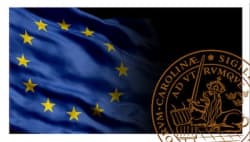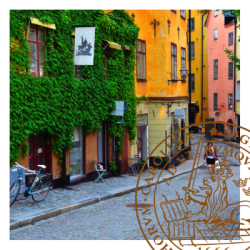Images
How can we live a good life on one planet with over seven billion people? This course will explore greening the economy on four levels – individual, business, city, and nation. We will look at the relationships between these levels and give many practical examples of the complexities and solutions across the levels. Scandinavia, a pioneering place advancing sustainability and combating climate change, is a unique starting point for learning about greening the economy. We will learn from many initiatives attempted in Scandinavia since the 1970s, which are all potentially helpful and useful for other countries and contexts. The International Institute for Industrial Environmental Economics (IIIEE) at Lund University is an international centre of excellence on strategies for sustainable solutions. The IIIEE is ideally suited to understand and explain the interdisciplinary issues in green economies utilising the diverse disciplinary backgrounds of its international staff. The IIIEE has been researching and teaching on sustainability and greener economies since the 1990s and it has extensive international networks connecting with a variety of organizations. 5-8 hours/week 5 weeks duration 40 films 20 teachers
Similar resources
Lund University was founded in 1666 and is repeatedly ranked among the world’s top 100 universities. The University has around 46 000 students and more than 8 400 staff based in Lund, Helsingborg and Malmö. We are united in our efforts to understand, explain and improve our world and the human condition.
Education and research
Lund is considered one of the most popular study locations in Sweden. The University offers one of the broadest ranges of programmes and courses in Scandinavia, based on cross-disciplinary and cutting-edge research.
The unique disciplinary range encourages boundary-crossing collaborations both within academia and with wider society, creating great conditions for scientific breakthroughs and innovations. The University has a distinct international profile, with partner universities in around 70 countries.
Lund University has an annual turnover of EUR 912 million, of which two-thirds go to research in our nine faculties and one-thirds to education.
We provide education and research within the following areas:
- economics and management
- engineering and technology
- fine arts, music and theatre
- humanities and theology
- law
- medicine
- science
- social sciences
World-leading research facilities
Two of the world’s foremost research facilities for materials research and life sciences are established in Lund – the synchrotron radiation facility MAX IV and the European Spallation Source (ESS), the world’s most powerful neutron source, which will be fully operational by the end of 2027.
These facilities together with the new Lund University campus in Science Village will constitute a highly visible, world-leading center for research in materials and life sciences, cultural heritage and environmental science.
The development of this science complex will create an international hub for research, education and innovation in which Lund University plays a central role.


European Business Law: Understanding the Fundamentals










